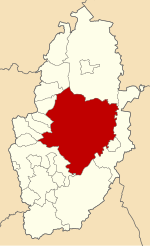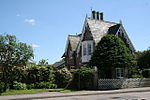Hockerton Housing Project
Buildings and structures in NottinghamshireSustainable buildings in the United KingdomSustainable communitiesUse British English from February 2015
The Hockerton Housing Project is a small community of five earth sheltered homes on the outskirts of Hockerton, Nottinghamshire, UK. The houses were designed by ‘green’ architects Professor Brenda Vale and Dr Robert Vale. Low carbon living is facilitated through the use of renewable energy, the water system, food grown on site, and the community's approach to work and transport.The homes were completed in September 1998 after three years of planning and 18 months of construction, at a cost of about £65,000. Two homes have since changed ownership on the open property market.
Excerpt from the Wikipedia article Hockerton Housing Project (License: CC BY-SA 3.0, Authors).Hockerton Housing Project
Gables Drive, Newark and Sherwood
Geographical coordinates (GPS) Address Nearby Places Show on map
Geographical coordinates (GPS)
| Latitude | Longitude |
|---|---|
| N 53.0974 ° | E -0.9295 ° |
Address
Gables Drive
Gables Drive
NG25 0QU Newark and Sherwood
England, United Kingdom
Open on Google Maps










